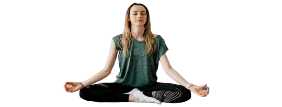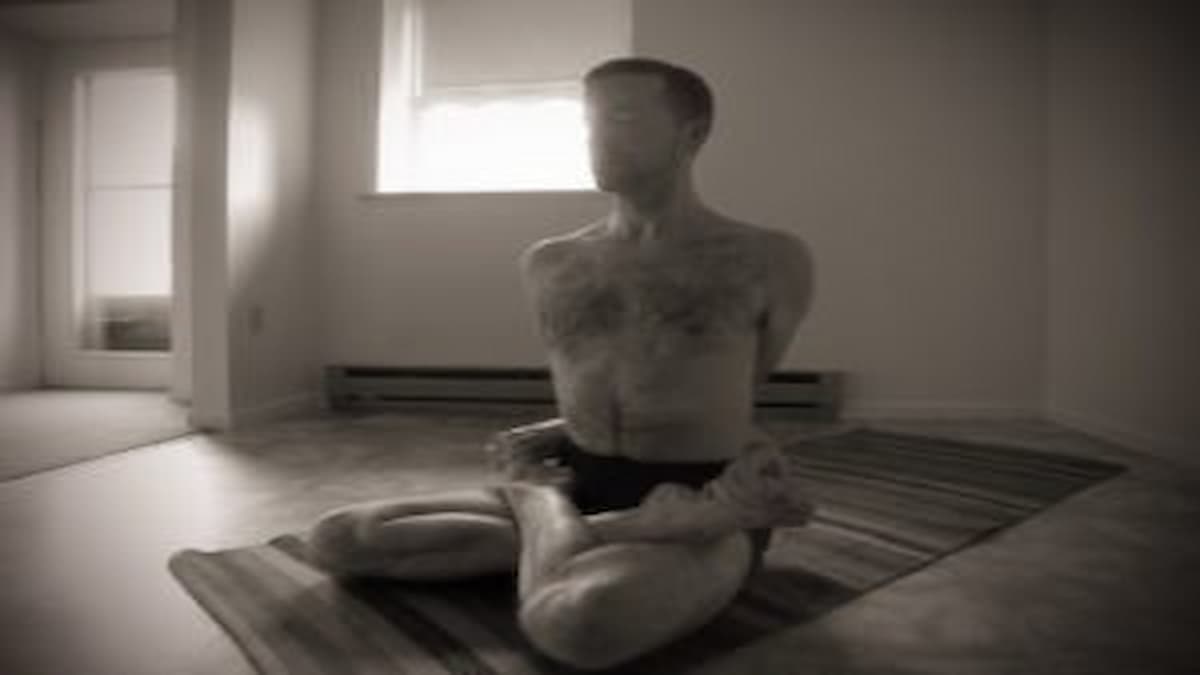Introduction
Baddha Padmasana is an advanced variation of Lotus Posture. It is the medieval version of the ancient Lotus Posture. This is one of the yoga poses meant for meditation. It plays a major role in Kundalini Yoga.
This article discusses its origin, history, meaning, steps, and benefits.
Baddha Padmasana Information
| Pose Name | Baddha Padmasana |
| Sanskrit | बद्ध पद्मासन |
| IAST | baddha padmāsana |
| English Name | Bound Lotus Pose Locked Lotus Pose |
| Pronunciation | pad-MAHS-anna |
| Level | Advanced |
| Type | Seated Meditation |
Origin and History
In fact, the pose which is now known as Baddha Padmasana was the simple version of the Lotus Pose described in Hatha Yoga Pradipika.
But Lotus Pose is older than Hatha Yoga Pradipika. Earlier texts like Thirumanthiram and Yoga Yajnavalkya describe a simple Lotus Posture only.
Baddha Padmasana is one of the versions of Lotus Pose that is described in Hatha Yoga Pradipika and other medieval Hatha Yoga Texts. However, the name is a modern one.
Baddha Padmasana Meaning
The term Baddha Padmasana is the combination of the words Baddha and Padmasana. Baddha means bound or locked. So, Baddha Padmasana is Bound Lotus Pose or Locked Lotus Pose.
Baddha Padmasana Procedure
The Practice Regime includes precautionary measures, preparatory poses, steps, and follow-up poses.
Baddha Padmasana Safety and Precautions
If anyone has the following health conditions, she should avoid this posture.
- Pregnancy
- Sciatica pain
- A knee injury or disorder
- Lower back ailments
- Shoulder injury or disorder
In case of doubt, consult your doctor before taking this practice.
Preparatory Poses
The following postures help one to master Bound Lotus Pose.
- Easy Pose
- Half Lotus Pose
- Lotus Pose
- Head to Knee Pose
- Cow Face Pose
- Bound Angle Pose
- Half Lord of Fishes Pose
Baddha Padmasana Steps
Step 1
Sit in Lotus Posture. Take your arms and cross them behind the back.
Step 2
Reach out for big toes and hold the right big toe with the left hand and left big toe with the right hand.
Step 3
Breathe Normally. Retain the position as long as it is comfortable.
Step 4
Release the position. Sit again in Lotus Posture with legs crossed the other way. Repeat Steps 1 to 3.
Baddha Padmasana Duration
Duration depends on the capacity of the practitioner. The point is one should not feel any discomfort during the practice. Advanced Yogis perform meditation in the bound lotus posture.
Tips
If it is difficult to hold the big toes, adjust your shoulders, and try again. Still, if you find it difficult, stretch your hands towards the toes to the maximum ability. Continue to be in that position. In the course of time, it will be easier. Regular practice of poses like Cow Face Pose will facilitate the process.
Baddha Padmasana Follow-Up Poses
Any one of the following poses should be followed after the practice of the Bound Lotus Pose.
Advanced Pose Considerations
After getting mastery over the Bound Lotus Posture, one may combine Yoga Symbol Pose and Bound Lotus Pose together. Only those who have mastery over both these two postures should go for it.
Baddha Padmasana Benefits
Alleviates Pain
Bound Lotus Posture stretches and tones the muscles of the shoulders, arms, back, and thighs. Hence it alleviates the pain in those areas.
Increases the flexibility and mobility
This posture increases the flexibility of arms, lower back, shoulder joints, and leg joints.
Drives out Stress and Anxiety
The practice of Bound Lotus Pose drives out stress and anxiety. Stress and anxiety cause many psychosomatic diseases. They also cause diseases like high blood pressure and cardiac ailments. Continuous practice makes one free from many diseases. Besides, it improves disease conditions.
Aids in Meditation
Bound Lotus Pose is one of the important postures for meditation. It is the basis for progress in yoga. Moreover, Meditation has many benefits.
Helps in activating Kundalini
Bound Lotus Pose helps in Kundalini yoga. So it serves as a means to attain spiritual goals.
Corrects the posture
Bound Lotus Pose helps to correct the posture. Hence it is good for those who are having a sedentary lifestyle.
Gets Rid of Postpartum Belly
It helps to correct the postpartum belly. Normally it goes on its own. However, the practice of this posture speeds up the process.
Helps to Manage Weight
Bound Lotus Posture helps in weight management. Also, it reduces belly fat. This posture can be a part of an effective weight management plan.
Tones Up the Internal Organs
The consistent practice tones up the internal organs of the abdomen. The functions of the kidney, liver, pancreas, and intestines will improve. Hence it prevents many diseases.

